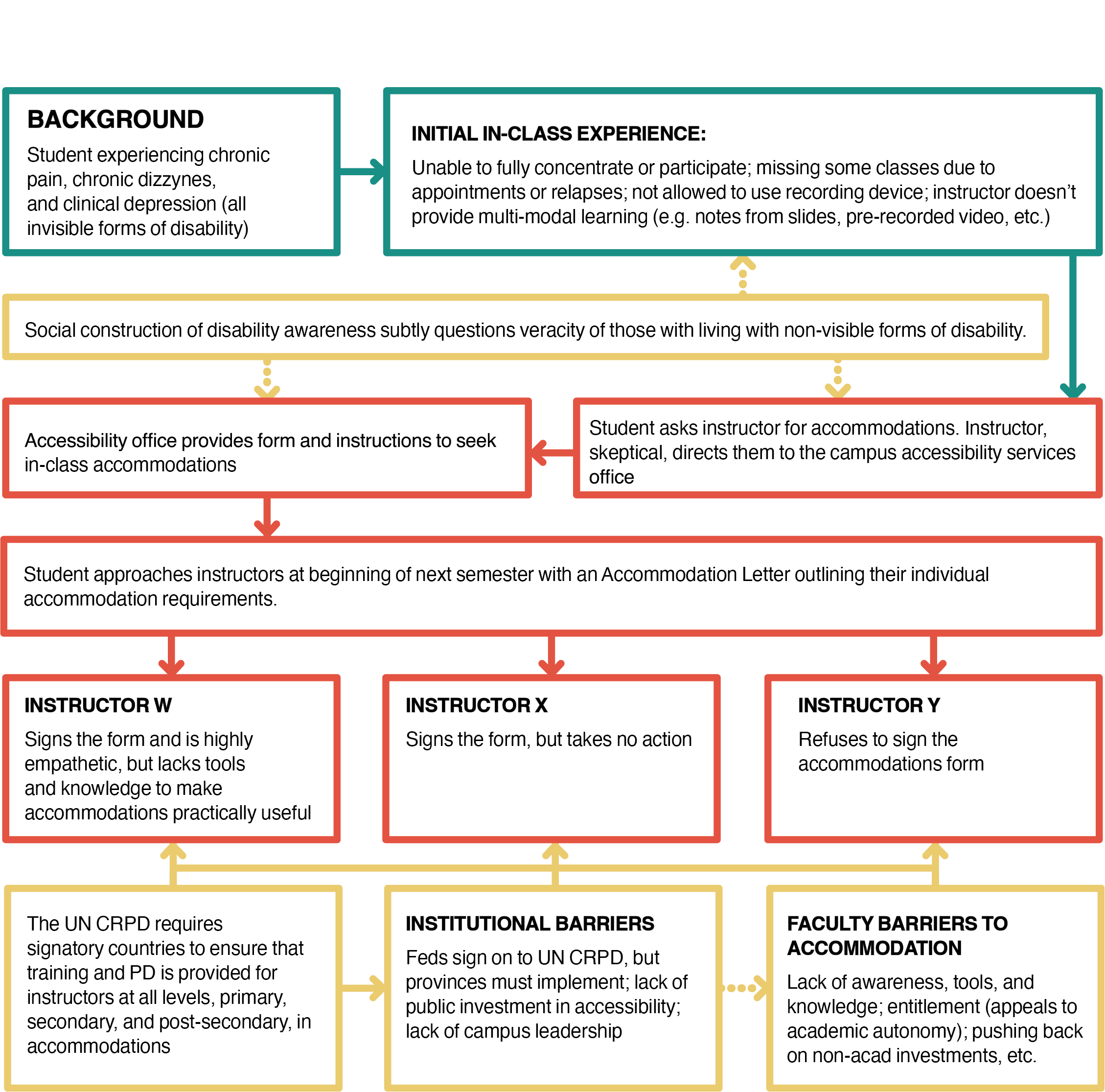Domain 7: Accessible Education
53 Systems Snapshot: Accessing Academic Accommodations
“…being accessible should not be tied to being diagnosed with a disability and then [educators] being effectively forced to have to accommodate people…”
– Dani & Eevee, Content Creator[1]
Students must navigate a challenging path to access accommodations in learning environments. The journey map in the image below, (also described in text) follows various pathways of a student seeking accommodations. This student in the example is experiencing an invisible cognitive disability as this experience is often overlooked in educational settings.

Background: Starting in the top left, the student’s experience is introduced – they are experiencing chronic pain, chronic dizziness, and clinical depression. All these are examples of invisible forms of disability.
Initial In-Class Experience: The student is unable to fully concentrate or participate. They are missing some classes dues to appointments or relapses. In class, they are not allowed to use a recording device and the instructor does not provide multi-modal learning (e.g. notes from slides, pre-recorded videos, etc).
Social Construction of Disability Awareness: In between the context set by the first two steps and the next steps in the journey, is a yellow box with one societal influence represented. The social construction of disability awareness subtly questions veracity (or legitimacy) of those living with non-visible forms of disability.
Seeking Accommodation: First the student asks the instructor for accommodations. The instructor is skeptical and directs them to the campus accessibility services office. The Accessibility Office provides the student with forms and instructions to seek in-class accommodations. The student completes these steps and approaches all instructors at the beginning of the next semester with an Accommodation Letter outlining their individual accommodation requirements. The responses of three different instructors are mapped as potential pathways.
Instructor W: Signs the form and is highly empathetic, but lacks the tools and knowledge to make the accommodations practically useful.
Instructor X: Signs the form but takes no action.
Instructor Y: Refuses to sign the accommodation form.
Below the instructor responses, additional context is provided into why these barriers exist and some of the societal factors that should be reducing barriers for students.
The UN CRPD requires signatory countries to ensure that training and PD is provided for instructors at all levels, primary, secondary, and post-secondary, in accommodation. While the Federal Government sign on to UN CRPD, provinces must implement them. Some lack of public investment in accessibility or there is a lack of campus leadership. Additionally, faculty experience barriers in providing accommodation due to lack of awareness, tools, and knowledge, entitlement (appeals to academic autonomy and rigour), and push-back on non-academic investments.
Ultimately, successfully navigating accommodations often relies on the students’ ability to advocate and push-back in spite of a power-imbalance. While some instructors create accessible classrooms, where accommodations are provided to everyone without requiring a formal request, many students have to navigate portions of this journey each semester.
- Dani & Eevee. (2023, September 30). Accessible Education [TikTok Video]. @DaniAlexandriaMusic. https://vm.tiktok.com/ZMjtxStgk/ ↵
